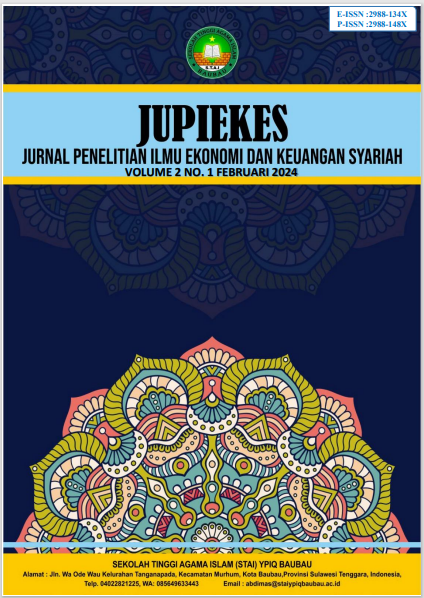Penerapan Metode Perencanaan Partisipatif Dalam Pengembangan Wilayah Pedesaan
DOI:
https://doi.org/10.59059/jupiekes.v2i1.990Keywords:
Identification of Potential and Problems, Participatory Planning Methods, Village LawAbstract
Use of the Transect method as a participatory planning method in exploring potential and problems visually as well as practice in participatory development planning in the Village Poverty has been a phenomenal problem throughout Indonesia's history as a nation-state. This poverty causes areas to be neglected and isolated. Development inequality appears and has an impact on the increasingly left behind poor villages. Law Number 6 of 2014 concerning Villages, explains that the Village Government and village communities work together to develop in a spirit of mutual cooperation in the context of utilizing natural resources to achieve improvements in the welfare of village communities and their quality of life through sustainable use of natural resources and the environment. These efforts start from planning, implementation, to monitoring and evaluation with the right approach and methods. The question is whether village government officials in Indonesia understand and master planning methods and identify potential and problems in their villages. This article discusses a technique for identifying village potential and problems that can be used in the planning process at the village level. One method that is quite relevant in assessing the conditions of rural areas is the Participatory Planning Method which is considered quite effective for identifying potential, problems and formulating appropriate alternative solutions in a participatory manner.
References
Ahmad, Jamaluddin. (2015) Metode Penelitian Administrasi Publik Teori dan Aplikasi. Yogyakarta: Gava Media
Alam, A. and Ishan, S. (2012). Role of Participatory Rural Appraisal in Community Dvelopment (A Case Study of Barani Area Development Project in Agriculture, Live Stock and Forestry Development in Kohat). Int. J. Acad. Res. Busi. & Soc. Sci. 2 (8): 25-38.
Chambers, Robert. (1992). Memahami Desa Secara Partisipatif. Yogyakarta: Kanisius dan Oxfam.
Chambers, Robert. (2007). From PRA to PLA and Pluralism: Practice and Theory.Working Paper#286, Institute of Development Studies, University of Sussex, Sussex, UK. pp. 7-12.
Creswell, John W. (penerjemah Achmad Fawaid). (2013). Research Design Pendekatan Kualitatif, Kuantitatif dan Mixed. Yogyakarta: Pustaka Pelajar.
Haddy. (1986). Fisiologi Tumbuhan, UMM Press, Malang
Moeliono dan Djohani Rianingsih. 1996. Kebijakan dan Strategi Penerapan PRA dalam Pengembangan Program. Driya Media. Bandung.
Rochdyanto, Saiful. 2000. Langkah-langkah Pelaksanaan Metode PRA. Makalah ToT PKPI.Yogyakart a.
Anonim, Modul Diklat Participatory Rural Appraisal (PRA). Departemen Pertanian. 2004.








